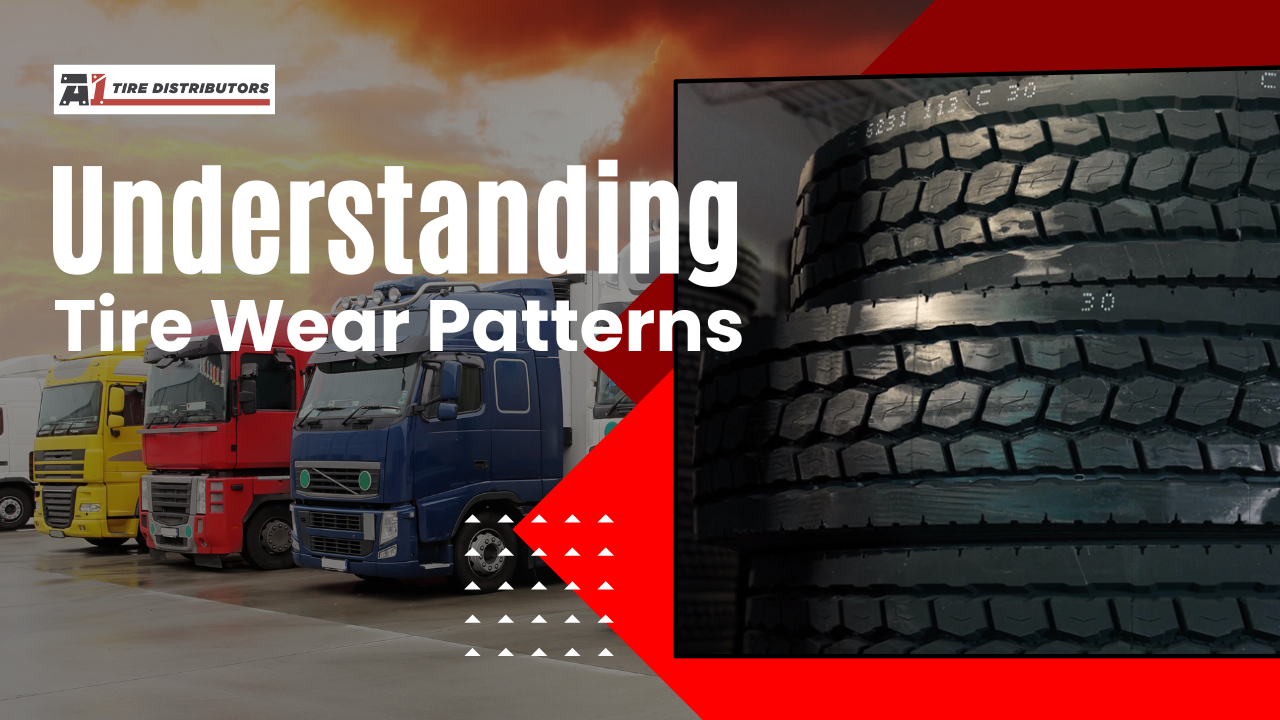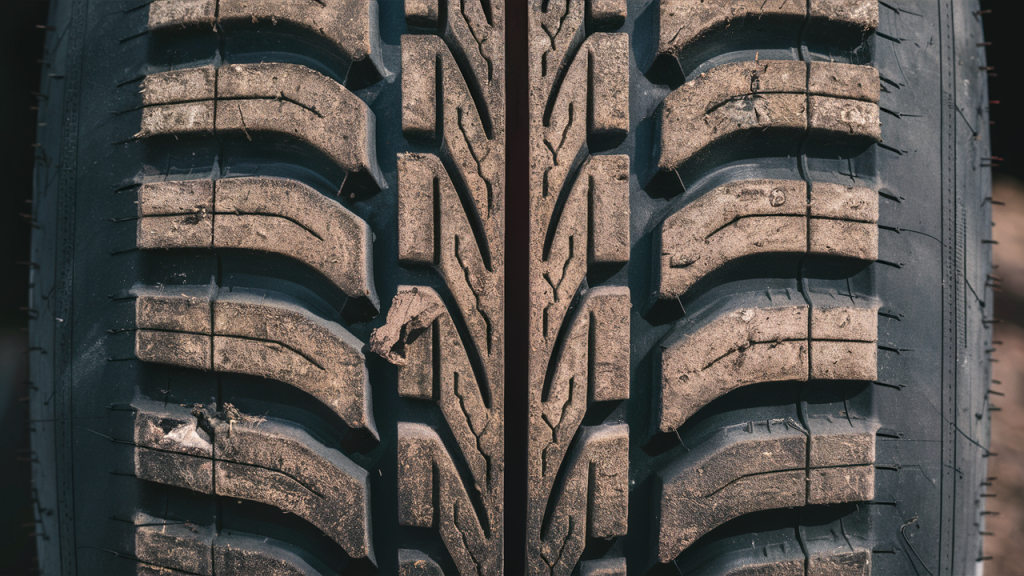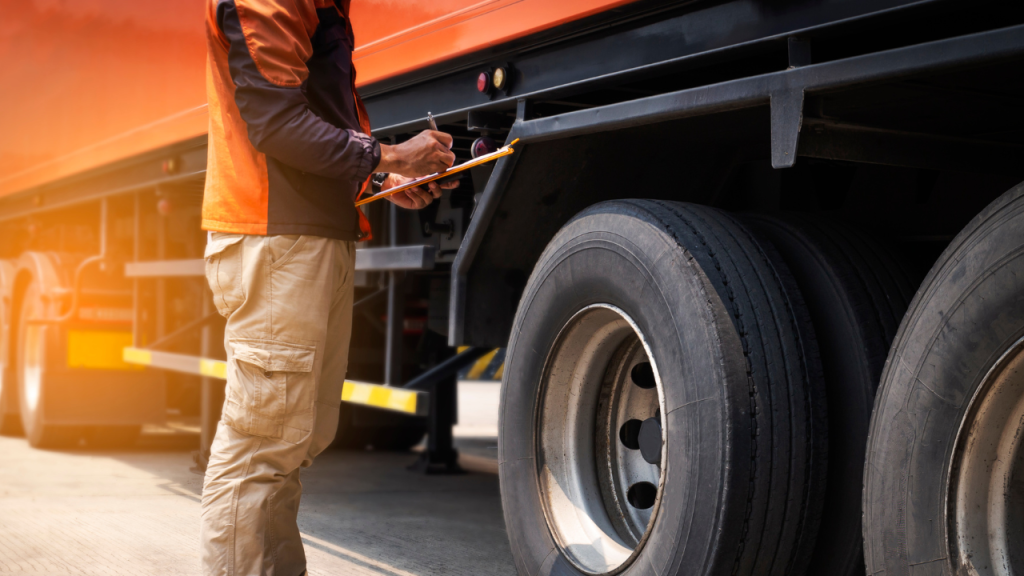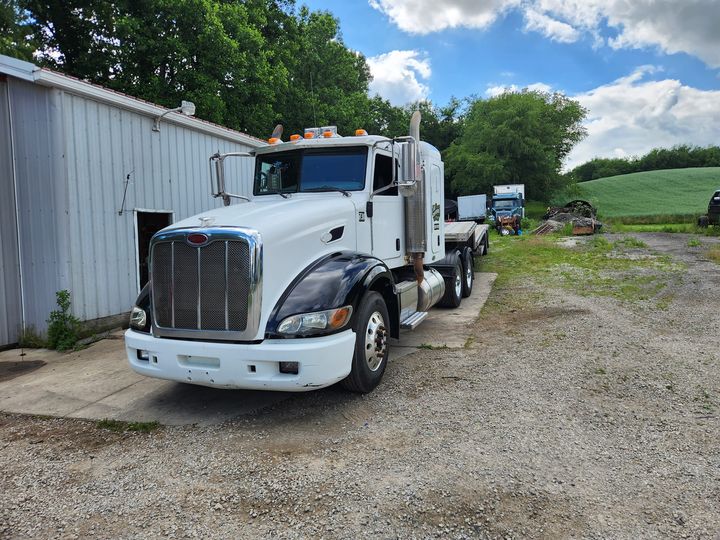
Tire wear patterns are more than just signs of aging rubber; they can reveal underlying issues with your fleet’s performance, alignment, and maintenance practices. Recognizing and addressing these patterns early can prevent costly repairs, improve safety, and extend the life of your tires. In this article, we’ll explore the most common tire wear patterns, what causes them, and how you can prevent them to keep your fleet running smoothly.
Common Tire Wear Patterns

1. Center Wear
- Cause: Overinflation
- Effect: When tires are overinflated, the center of the tread makes more contact with the road than the edges, leading to premature wear in the center of the tire. This reduces traction and can shorten the tire’s lifespan.
- Solution: Regularly check and adjust tire pressure to ensure it’s within the manufacturer’s recommended range. This simple maintenance step can prevent center wear and extend tire life.
2. Edge Wear
- Cause: Underinflation or misalignment
- Effect: Underinflated tires cause the outer edges of the tread to wear more quickly, as they bear the brunt of the vehicle’s weight. Misalignment can also lead to one side of the tire wearing faster than the other, creating uneven wear.
- Solution: Maintain proper tire inflation and have regular alignment checks to ensure even wear across the entire tread.
3. Cupping or Scalloping
- Cause: Worn suspension components
- Effect: Cupping or scalloping appears as a series of high and low points along the tread, often causing a bumpy ride and noise. This pattern is typically a sign of worn or damaged suspension components.
- Solution: Inspect and replace worn suspension parts as needed. Regular suspension maintenance is key to preventing cupping and ensuring a smooth ride.
4. Feathering
- Cause: Improper alignment or worn suspension
- Effect: Feathering occurs when the tread ribs develop sharp edges, usually as a result of misalignment or worn suspension components. This pattern can reduce tire life and impact vehicle handling.
- Solution: Realign the vehicle and inspect the suspension system regularly to prevent feathering and ensure safe, efficient operation.
How to Identify Wear Patterns

Visual Inspection
- Conduct regular visual inspections of your tires, looking for signs of uneven wear. Pay attention to the tread depth across different areas of the tire.
Touch Test
- Run your hand over the tread surface to feel for irregularities, such as sharp edges (feathering) or high and low spots (cupping). This can help you identify issues that may not be immediately visible.
Regular Checks
- Implement a routine schedule for tire inspections. Early detection of wear patterns can prevent more significant problems and extend the life of your tires.
The Impact of Ignoring Tire Wear
Safety Risks
- Ignoring wear patterns can lead to tire blowouts, reduced traction, and even accidents. Unevenly worn tires are less predictable and can compromise vehicle stability, especially in adverse conditions.
Cost Implications
- Uneven wear forces you to replace tires prematurely, driving up costs. Additionally, underlying issues such as misalignment or worn suspension parts can cause further damage to your vehicles, leading to expensive repairs.
Preventing Tire Wear
Proper Inflation
- Maintaining correct tire pressure is the simplest and most effective way to prevent uneven wear. Regularly check and adjust tire pressure to match the manufacturer’s recommendations.
Regular Alignment
- Regular alignment checks ensure that your tires wear evenly, improving fuel efficiency and extending tire life. Misalignment not only causes uneven wear but also impacts handling and safety.
Suspension Maintenance
- Keep your suspension system in top condition with regular inspections and timely repairs. Healthy suspension components prevent issues like cupping and feathering, ensuring a smoother, safer ride.
Understanding tire wear patterns is crucial for maintaining a safe and efficient fleet. By recognizing these patterns and taking corrective action, you can prevent costly damage, improve vehicle safety, and extend the lifespan of your tires. Regular maintenance, including proper inflation, alignment, and suspension checks, is key to avoiding uneven wear and keeping your fleet running smoothly.
Want to ensure your tires are in top condition? Contact A1 Tire today to schedule a professional tire inspection or alignment service. Our experts are here to help you maintain your fleet and prevent tire wear before it becomes a problem.


